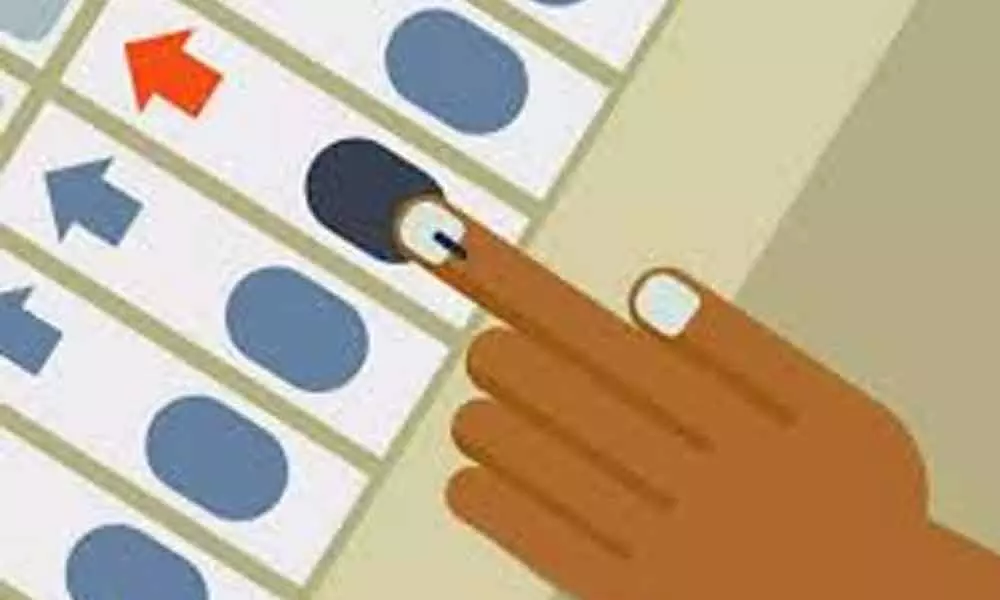Live
- Strict Protocols Set for Group 2 Exams in Wanaparthy District
- Delhi Police busts gang involved in cable theft on Delhi Metro Blue Line
- MP's Gita recitation programme finds place in Guinness World Records
- Pawan Kalyan Shines Globally as 2nd Most Googled Actor of 2024 Amid Busy Film, Political Career
- Disruptor of House is the chairman himself: Cong and INDIA bloc’s pointed remarks on No-trust notice
- IIIT-Bangalore to host computer vision conference ICVGIP 2024
- F1: Fernando Alonso ‘still dreaming’ of third world championship
- WI vs Bangladesh Watch Controversial Banter Between Shakib and King
- EFLU Celebrates Bharatiya Bhasha Diwas
- Manchu Manoj Submits Bond of Rs. 1 Lakh to Rachakonda Commissioner
Just In
Up polls: Wooing castes is the name of the game


Up polls: Wooing castes is the name of the game
All eyes are now on the next Assembly elections in Uttar Pradesh in 2022, which are not far away, the reason being that UP happens to be the heartland
All eyes are now on the next Assembly elections in Uttar Pradesh in 2022, which are not far away, the reason being that UP happens to be the heartland of the country. Uttar Pradesh has ample natural and human resources.
On this land of the great incarnations of God, Lord Krishna's Mathura became the main centre of trade. Similarly, Kashi, the city of Baba Vishwanath, Ayodhya, the city of Lord Shri Ram, Saraswati, the kingdom of Kosala in the ancient period and where Buddha is said to have spent most of his time after enlightenment, along with some other cities were not only great centres of religion and spirituality but also became major centres of contemporary economic and international trade. Agriculture, trade, spirituality, crafts etc., were the four pillars on which thrived the economy of Uttar Pradesh. But in the last seven decades since independence, UP has been considered a BIMARU State. Now, slowly the perception is changing. Hence, the UP Assembly elections-2022 gain importance.
UP is known for the dominance of Thakurs in Western Uttar Pradesh villages. They constitute about 7% of the population. If there are, say, 600 families in a village, 50% of them would be Thakurs. Thakurs belong to the warrior class. They are also predominantly landowners who cultivate land with hired labour and have good managerial skills. Chief Minister Yogi Adityanath is also a Thakur and a majority of Thakurs are likely to opt for him again.
When it comes to the elections, UP presents an interesting scenario. While on one hand, Thakurs have a major role to play in the caste-ridden northern state, small also becomes big and even a miniscule sub-caste becomes a force to reckon with. In UP, there are nearly 45% OBC voters. Yadavs are around 9%. Hence, all political parties vie with one another for this nearly non-Yadav OBC votes. In the next elections, about 8% Yadavs may go with Samajwadi Party.
Brahmins comprise about 11% of UP's population. If the present situation is any indication, almost 8% to 9% of them are likely to go with the BJP. The Vaishyas who constitute about 3% voters have traditionally been BJP voters. At the most, there may be a dent to the extent of half to one per cent of these voters, who may prefer other parties. Another advantage the BJP appears to have this time is that it has made inroads into the Jatav Dalit votes. Of the 11%, at least about 5% per cent are likely to vote for the BJP.
In Eastern UP, which consists of about 24 districts, Rajbhars, who mostly are labour force, can prove to be game changers. They can influence about 66 out of 100 assembly seats in the eastern UP. The race to woo them is on and it remains to be seen what their preference would be.
Nishad is fishermen community who live in 26 districts through which Ganga flows. It is said that it was their king Nishadraj who steered the boat in which Lord Rama crossed the river. This community is a major force in Gorakhpur, Maharajganj, Deoria, Varanasi, Prayagraj and Mirzapur.
Muslims who had lost their importance in the last election are trying to regain their place. They would be looking for a party that could pose a challenge to the BJP. There are as many as 45 seats where they can make a difference.

© 2024 Hyderabad Media House Limited/The Hans India. All rights reserved. Powered by hocalwire.com






